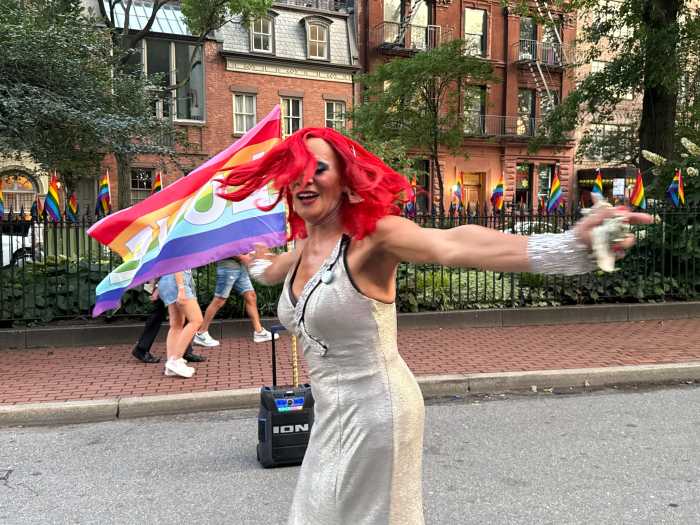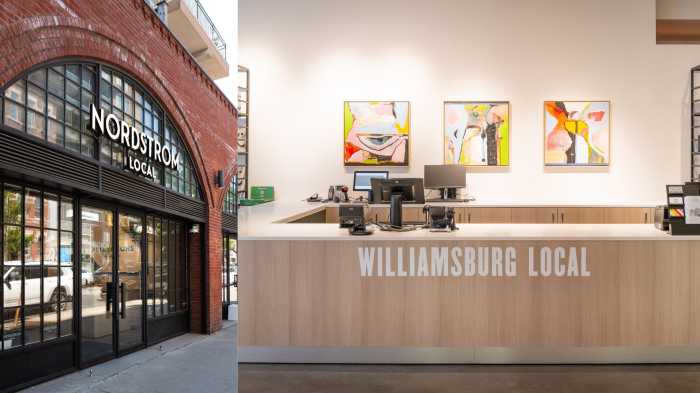For over the last ten years, you may have come across the work of illustrator and portrait artist Michael Deas.
His dignified and alluring portraits of famous people such as Marilyn Monroe, James Dean and Audrey Hepburn may have appeared in your mail.
Working as an artist in Brooklyn for the past 30 years, Deas, 52, has illustrated numerous stamps for the United States Postal Service since 1995. His stamp subjects, most of them American writers and actors, have included Tennessee Williams, Thomas Wolfe, Humphrey Bogart, F. Scott Fitzgerald and Cary Grant.
The Postal Service has already commissioned Deas to work on two stamps this year. The first honored Marjorie Kinnan Rawlings, the Pulitzer Prize-winning author of “The Yearling” (1939), and was issued on Feb. 21. The other stamp depicting the Oscar-winning actress Bette Davis will debut on September 10, 2008, as part of the Postal Service’s Legends of Hollywood series.
Deas’ portraits on stamps began when Carl Herrman, an art director from the Postal Service, contacted him to work on a series about people and their pets. Deas created several sketches for that project and although his work for that series was never published, “The response to the work was favorable enough,” he said, “that Carl then asked me to do a postage stamp of Tennessee Williams, and that was my very first stamp.”
For Deas, the time given to design a stamp varies; he said that a project could be assigned to him a year or two years in advance. In recent years he had to turn in work in a short amount of time, such as his portraits of Presidents Ronald Regan and Gerald Ford. (According to Postal Service rules, a person to be honored on a postage stamp must be deceased for five years, with the exception of U.S. Presidents).
Because the subjects he paints are deceased, Deas uses photographs. “When I do a stamp,” he said, “I don’t want to rely on photographs that everyone has seen a million times before. One of the things I endeavor to do when I’m starting a stamp is to find a photograph that really captures the essence of an individual, but with a photograph that is perhaps not that well known.”
In a Postal Service press release in conjunction with her husband’s stamp issued last August, Betty Ford said, “The stamp wonderfully portrays [President Ford’s] strength, warmth, and compassion.” According to Deas, he used a photograph of Ford that his widow Betty had a preference for.
“The challenge with the Ford stamp,” he said, “was that he was in mid-speech, so I had to kind of change the image [from] the photograph that was given to me so he would look like he was not talking. I had to change the mouth a good deal and that required a certain amount of trial and error to make it look natural.”
Deas noted his work on the Marilyn Monroe stamp from 1995 as an example of his approach. “I tried to make her a little more human,” he said of Monroe, “by having a couple of models pose for the body. If you notice in that stamp her head is turning and she is looking toward us as if we startled her a little bit. I tried to make her seem a little bit more lifelike than she might be in some of the more iconic photographs of her.”
When Deas was commissioned to design the new Bette Davis stamp, Davis’ estate requested that the stamp image to be created was based on a publicity photo from the late actress’ 1950 film “All About Eve.”
“In the original photograph she was wearing a fur coat,” Deas said. “So I had to go out and get a red velvet coat, something that approximated the feel and texture of a fur coat without being a fur coat. I went into the fabric district and found a pair of silk gloves that would have been typical of what Bette would have worn, and I added the hands and the coat. So I took her face but I tried to add a little extra pizzazz to the existing still.”
Deas said he is proud of working on the Lewis and Clark issues from 2004. “I tried to imitate the look of a 19th century painting,” he said about those stamps. “I also did the scroll work around the images. I think vintage stamps are so beautiful with their engraving and texture. It was my way of acknowledging of how beautiful stamps of the past were.”
He emphasized the importance of how a stamp is printed by the printing companies that the Postal Service hires: “You can do the most painstaking, laboriously beautiful stamp or a piece of art that you can. But if the printer shifts the colors or if the registration isn’t properly aligned…no matter how good a job you’ve done as an artist, it’s going to look terrible in reproduction.”
In addition to his stamp work, Deas has also illustrated book and magazine covers. You’ve probably seen his work at the beginning of a movie since he painted the current Columbia Pictures logo. “I still think the version that they were using [in the early ‘60s] was better than mine,” he said. “The logo in those days were one of the most stunning I’ve seen. I’m very proud to have done that.”
Based out in Brooklyn Heights, Deas has been inspired by the creativity of the borough in his own work, as well, from his postage stamp art to advertising art and portraiture.
“[A]s an artist I've always found Brooklyn to be inspiring – perhaps now more than ever, what with more and more artists being pushed out of Manhattan for good, and the borough itself undergoing a renaissance of sorts,” said Deas. “I've always found Brooklyn inspiring. I suppose it's why I've stayed here all these 30 years.”
For more on Michael Deas, go to http://www.michaeldeas.com.























